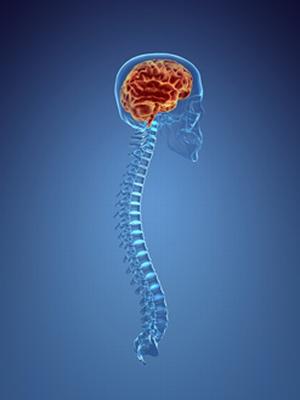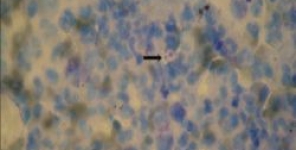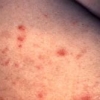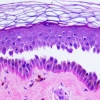Criteri per la diagnosi di neurosifilide dal liquido cerebrospinale
 Rapporti con la sintesi intratecale di immunoglobuline e con la disfunzione della barriera ematoencefalica.
Rapporti con la sintesi intratecale di immunoglobuline e con la disfunzione della barriera ematoencefalica.
Resta ancora i dubbio l'origine degli anticorpi della sifilide (intratecali o provenienti dal sangue) riscontrati nel liquido cerebrospinale (CSF) e si sa ancora poco riguardo il comportamento del test del CSF nella condizione di funzionamento fisiologico o patologico della barriera ematoencefalica (BCB) e in rapporto alla produzione intratecale di immunoglobuline (Ig).
Metodi
Abbiamo raccolto 126 coppie di siero/CSF da pazienti con evidenza sierologica di sifilide. Abbiamo esplorato la relazione tra i fatti accertati di sintesi intratecale di Ig e/o di disfunzione della BCB con i risultati dei test diagnostici su CSF: il test di emoagglutinazione per Treponema pallidum (TPHA), il test di assorbimento di Ac anti-treponema fluorescenti (FTA-Abs), il test dal Laboratorio di Ricerca sulle Malattie Veneree (VDRL) e la conta dei globuli bianchi del sangue. Abbiamo controllato i criteri utilizzati sia per sostenere che per confutare la diagnosi di neurosifilide.
Risultati
Test VDRL reattivi per CSF, un'elevata conta di globuli bianchi nel CSF e elevati titoli/indici di TPHA nel CSF sono stati associati con i segni della sintesi intratecale di Ig; al contrario, il test FTA-Abs non reattivo per CSF, così come i test TPHA non reattivi o con titoli da 1:4 a 1:160 sono stati associati a casi in cui non è stata rilevata la sintesi intratecale di Ig. Nella condizione di disfunzione della BCB, si sono osservate alcune peculiarità nei test. La maggior parte dei campioni VDRL reattivi per CSF e i campioni di CSF con pleocitosi hanno soddisfatto almeno uno dei criteri basati sui titoli/indici di TPHA. Per quanto riguarda la risposta immunitaria intratecale, gli indici di emoagglutinazione di T. pallidum non hanno avuto una conformità migliore rispetto ai titoli di TPHA.
Conclusioni
I nostri risultati hanno dimostrato che tutti i criteri presi in esame per la diagnosi di neurosifilide da CSF rappresentano diversi strumenti per la valutazione dell'attività immunitaria umorale intratecale e sostengono l'ipotesi che alti titoli anticorpali treponema specifici nel CSF rappresentino una conseguenza della patologia infiammatoria del sistema nervoso centrale.
Storia della pubblicazione:
Titolo: Criteria for the Diagnosis of Neurosyphilis in Cerebrospinal Fluid: Relationships With Intrathecal Immunoglobulin Synthesis and Blood-Cerebrospinal Fluid Barrier Dysfunction
Rivista: Sexually Transmitted Diseases: December 2013 — Volume 40 — Issue 12 — p 917- 922. doi: 10.1097/OLQ.0000000000000049
Autori: Levchik, Nadezhda MD, PhD*; Ponomareva, Marina MS*; Surganova, Vera MD, PhD†; Zilberberg, Natalia MD, PhD‡; Kungurov, Nikolai MD, PhD‡
Affiliazioni:
Abstract:
Background The origin of cerebrospinal fluid (CSF) syphilis antibodies (intrathecal or blood-derived) is in doubt. Little is known about CSF test behavior under the condition of physiological or disturbed functioning of blood-CSF barrier (BCB) and intrathecal immunoglobulin (Ig) production. Methods We collected 126 serum/CSF pairs from patients with serological evidence of syphilis. We explored the relationships between the established facts of intrathecal Ig synthesis and/or BCB dysfunction and the results of CSF diagnostic tests: the Treponema pallidum hemagglutination (TPHA) test, the fluorescent treponemal antibody absorption (FTA-Abs) test, the Venereal Disease Research Laboratory (VDRL) test, and white blood cell counts. We checked the criteria used either to support or refute the diagnosis of neurosyphilis. Results Reactive CSF-VDRL tests, elevated CSF–white blood cell counts, and elevated CSF-TPHA titers/indices were associated with the signs of intrathecal Ig synthesis, whereas nonreactive CSF–fluorescent treponemal antibody absorption, nonreactive CSF- TPHA tests, and CSF-TPHA titers from 1:4 to 1:160 were associated with cases where the intrathecal synthesis was not detected. There were some peculiarities of the tests toward BCB dysfunction. Most of reactive CSF-VDRL test samples and CSF samples with pleocytosis were also meeting at least 1 of the CSF-TPHA titer/indices-based criteria. T. pallidum hemagglutination indices were in no better conformity with the facts of intrathecal immune response than CSF-TPHA titers. Conclusions Our findings have shown that all the examined criteria for the diagnosis of neurosyphilis in CSF are different assessment tools of intrathecal humoral immune activity and support the hypothesis that high CSF treponemal-specific antibody titers are a consequence of inflammatory pathology of the central nervous system.





